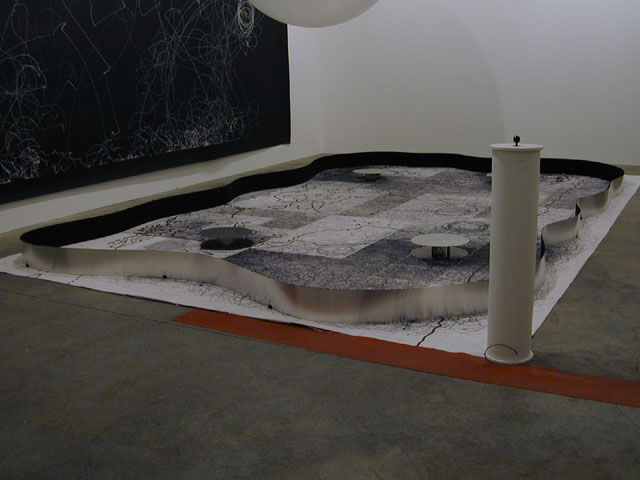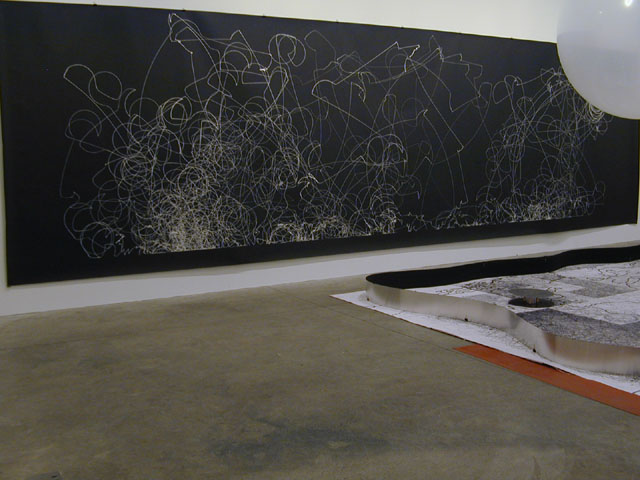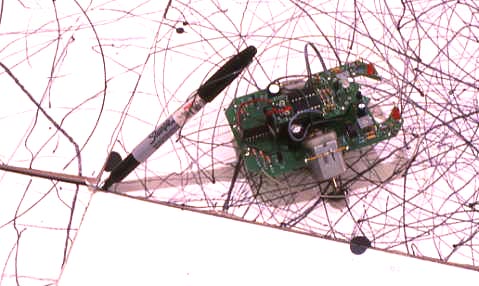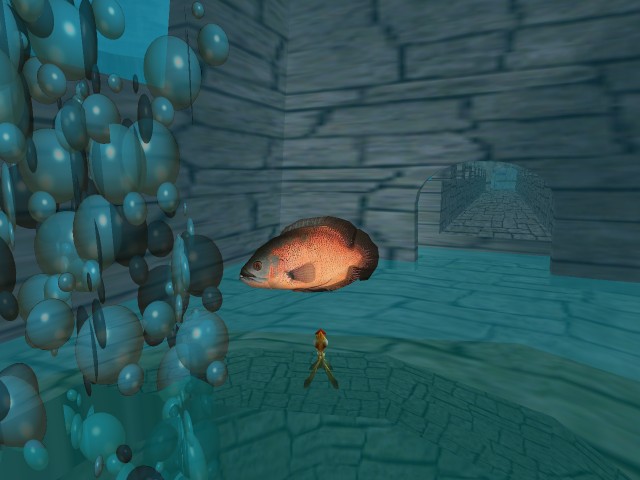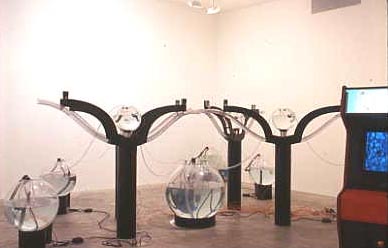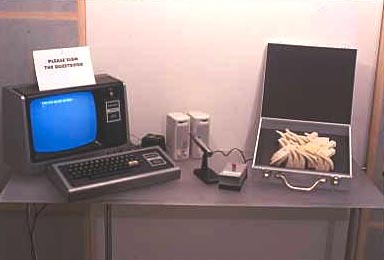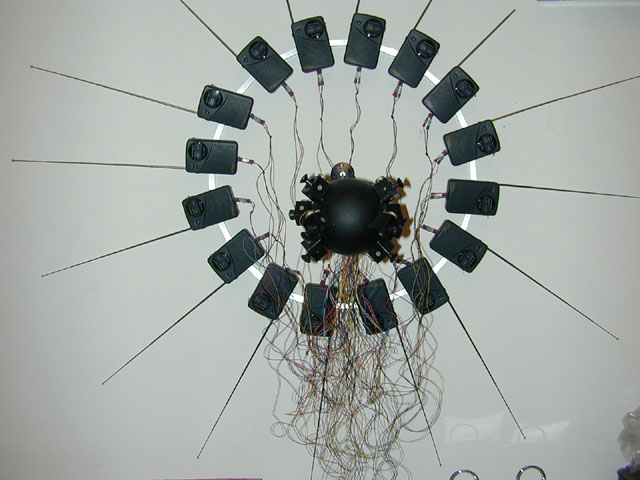| Gallery | |||
|
Currently in the Gallery: February 17 - March 24, 2001 JOHN
KLIMA
|
|||
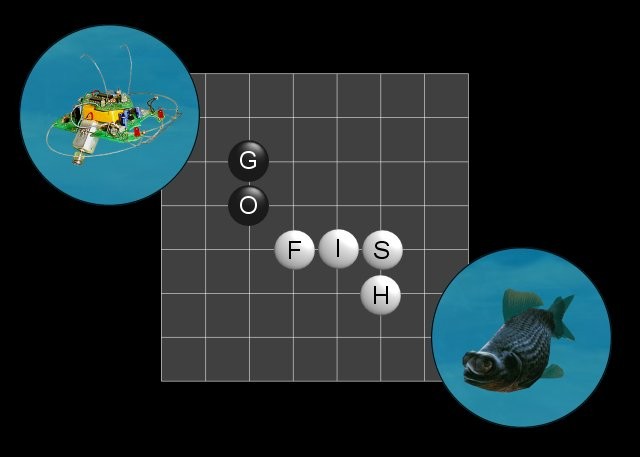 |
|||
| press release:
JOHN KLIMA
Postmasters Gallery is pleased to announce John Klima's first solo exhibition. Titled "Go Fish," the show will consist of interactive media installations connecting computer gaming and real life consequences. John Klima will also be exhibiting at the Whitney Museum exhibition "Bitstreams" (March 01) and recently received the "Golden Lasso Award for Art," Web3d RoundUp SIGGRAPH 2000 for his project "Glasbead". Circa 1980, Brooklyn-based Klima (b. 1965) attempted to code a 3D maze on a TRS-80 with 4k RAM and failed miserably. He has been obsessed with 3D ever since. Fascinated by the first primitive flight simulators and CAD programs, he began to build 3D graphics environments, and to write source code. By drawing upon gaming and the various possibilities of manipulating and transliterating data, John Klima's exhibition occupies completely virgin ground in new media art. Although there is an obvious connection between gaming and interactive digital art, and the gaming industry has played an important role in the development of multi-user environments, the parameters of this connection are almost never subjected to serious, aesthetic investigation. One of the pragmatic aspects of digital practice is that information can be reified in various forms and modalities - - be they physical objects, 3D representations or an interactive, networked installations. "Go Fish" traces the various manifestations of data in its migration from sound files to 3D objects and the impact of gaming on actual and virtual life forms. The question of "remote responsibility" raised by the results of players' actions so far has been the domain of critical writing rather than art, yet what was purely theoretical is here rendered utterly concrete. press:
The robotic counterpart to Jackson Pollock
spins in circles, dragging an attached
Viewers can direct the "bugs," as Klima
calls them, with a joystick linked to an
These tiny machines do more than scramble
our vision of the world. Each circle
The squares of paper can be bought one by
one, becoming progressively more
A former programmer for financial consultants
like Dun & Bradstreet, Klima will
Klima says his work attempts to "make real
something considered virtual, like a Star
Players might pity the victim, but the goldfish
must lose out sometimes, or the oscars
images and descriptions of artworks in the
exhibition:
|
|||
| "Go"
Go consists of corresponding virtual and physical
gaming
|
|||

spherical projection of the
game which allows for the charging stations to be turned on and off, affecting
the drawing on the ground
floor drawing continuously created by the robugs
30 feet long drawing created
by one robug, with the charging station moved along the bottom
|
|||
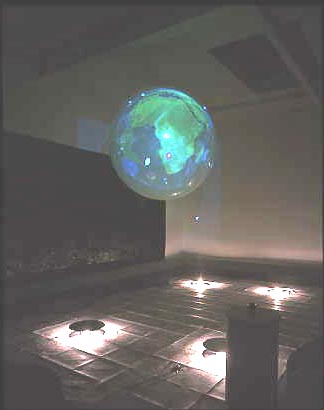
full view of "Go" installation
robug close up |
|||
| "Fish"
Implementing the classic paradigm of
the "first person 3D shooter",
cabinet graphic from "Fish"
game
|
|||

"Fish" arcade
|
|||
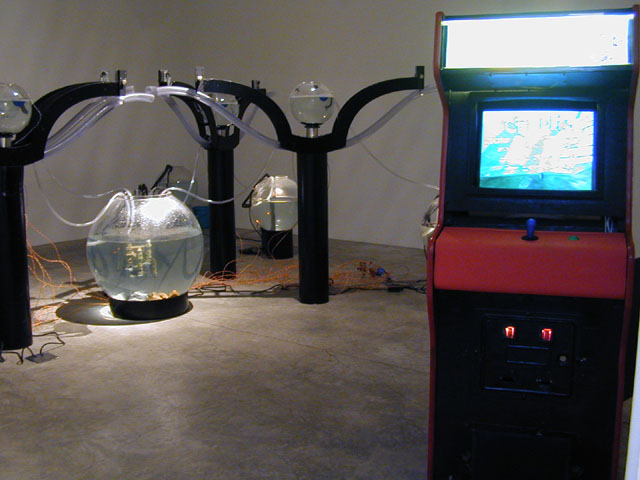
"Fish" installation |
|||
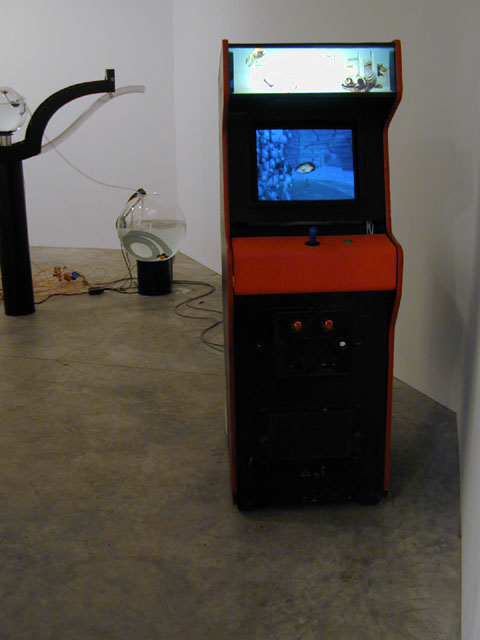
"Fish" arcade
|
|||
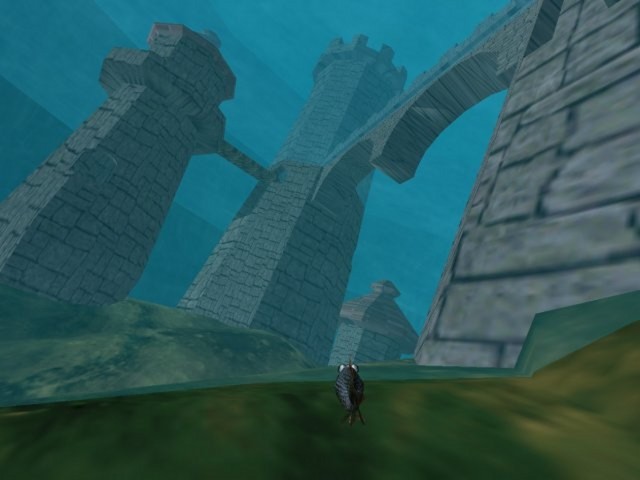
screen shot from "Fish" game
screen shot from "Fish" game
"Guestbook"
|
|||
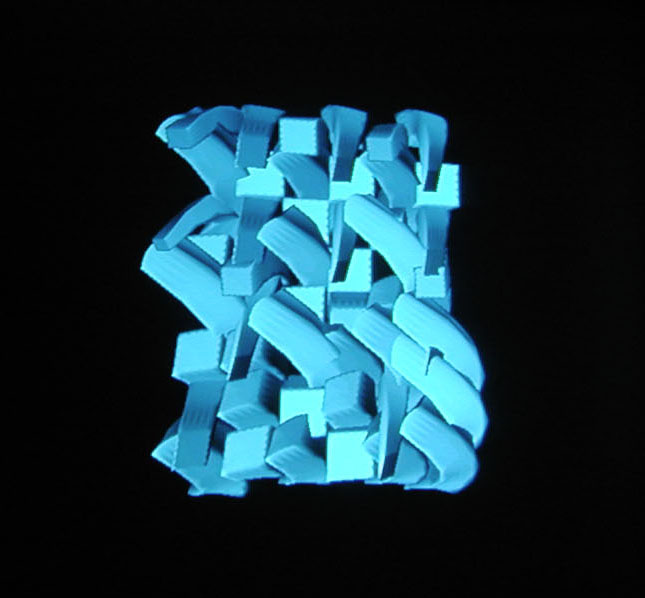
projection of a credit card
object
|
|||
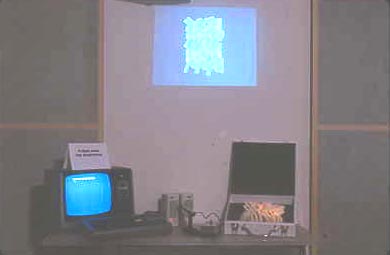 |
|||
| "Guestbook" installation
also in the gallery: "Optimus"(analog glasbead v1) Consisting of 16 modified radios attached to a
ring and 8 small
"Optimus" analog glasbead sculpture
|
|||
|
459 West 19th Street (corner of 10th Avenue) New York, NY 10011 Telephone 212 727 3323 Facsimile 212 229 2829 postmasters@thing.net |
